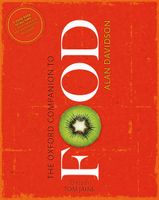Advertisement
Tart
Published 2014
The term ‘tart’ occurs in the 14th-century recipe compilation the forme of Cury, and so does its diminutive, ‘tartlet’. The relevant recipes are for savoury items containing meat. A mixture of savoury and sweet was common in medieval dishes and typical of the elaborate, decorative tarts and pies which were served at banquets. There was, however, a perceptible trend towards sweet tarts. These usually contained egg custard and fruits of various kinds, which could be used to provide the brilliant colours of which medieval cooks were fond: red, white, and pale green from fruits; strong green from spinach, which was used in sweet tarts; yellow from egg, with extra colour from saffron; and black from dark-coloured dried fruits. There are many 16th-century recipes for coloured ‘tartstuffs’.


